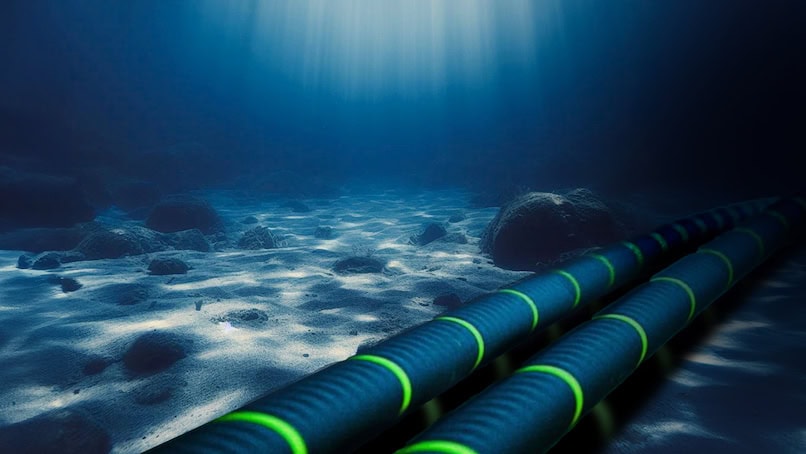Red Sea cable damage has become a pressing concern for internet users across the Middle East, South Asia, and parts of Africa. The incident has disrupted connectivity on a massive scale, with slowdowns expected to persist for months. This unprecedented event has drawn attention to the fragility of the global digital infrastructure, which depends heavily on undersea cables to carry the majority of the world’s internet traffic.
The recent damage to key undersea cables in the Red Sea has not only affected ordinary internet users but also businesses, cloud services, and critical government communications. As people experience slower browsing, delays in video conferencing, and interruptions in online services, the incident is proving to be a wake-up call for governments and corporations alike about the vulnerabilities of undersea cable networks.
What Happened
The Red Sea region is home to several major undersea cables that form vital links between Asia, Europe, and the Middle East. Among the cables affected are SEA-ME-WE 4 (SMW4), IMEWE, and FALCON. These cables carry an enormous volume of internet traffic, making them critical for the smooth functioning of digital networks in the region.

On September 6, 2025, multiple cables were severed near Jeddah, Saudi Arabia. The damage caused immediate internet slowdowns across the Middle East and adjacent regions, with noticeable effects in countries such as the UAE, Saudi Arabia, Pakistan, and India. Internet service providers reported slower speeds, interrupted services, and higher latency, affecting everything from personal browsing to cloud-based business operations.
The scale of disruption is significant because these cables handle a large portion of international internet traffic. When they are damaged, alternative routes must be used, which often cannot accommodate the same volume of data efficiently, leading to congestion and slowdowns.

The Impact on Internet Services
Cloud Services and Business Operations
Major cloud service providers experienced significant disruptions due to the Red Sea cable damage. Companies that rely on cloud infrastructure, such as virtual servers, storage, and enterprise applications, reported increased latency and slower performance. Businesses in affected countries had to adjust by rerouting traffic or temporarily relying on backup systems, which are often less efficient.
For many enterprises, the slowdowns impacted day-to-day operations. Video conferencing, online collaboration tools, and cloud-based project management platforms became noticeably slower. Industries that depend heavily on real-time data transmission, such as finance and e-commerce, faced particular challenges in maintaining smooth operations.
Internet Service Providers
Regional ISPs in the Middle East have been forced to manage the impact of the cable damage carefully. Telecom companies reported that internet speeds decreased significantly for both residential and commercial users. Some providers implemented temporary measures to prioritize business-critical traffic, while ordinary users faced delays in browsing, streaming, and accessing online services.
The slowdowns are expected to persist until repairs are completed. In the meantime, users are advised to be patient and consider alternative solutions, such as using mobile networks or satellite internet where available, although these options may come with higher costs or limited bandwidth.
Effect on Daily Life
For everyday internet users, the slowdowns caused by the Red Sea cable damage are highly noticeable. Streaming high-definition video may be interrupted, downloads may take longer, and online gaming experiences may suffer from higher latency. Remote workers and students relying on online platforms for work or education may face significant disruptions.
In addition to affecting personal usage, the cable damage also poses challenges for essential services that rely on the internet, including banking, healthcare communications, and emergency response systems. Delays in online transactions or disruptions in critical communications could have broader social and economic consequences.

Causes of the Red Sea Cable Damage
Experts analyzing the incident suggest that the damage was most likely caused by a commercial ship dragging its anchor, which severed the cables in relatively shallow waters of the Red Sea. Undersea cables are vulnerable in these areas due to their proximity to busy shipping lanes. While modern cables are designed to be resilient, physical impacts such as anchors, fishing equipment, or natural disasters can still cause severe damage.
The Red Sea is a strategic and busy maritime corridor, connecting the Mediterranean Sea to the Indian Ocean through the Suez Canal. With intense shipping traffic, undersea cables are exposed to risks that other regions may not experience as frequently. Even minor incidents can have significant repercussions, given the scale of internet traffic these cables carry.
Challenges in Repairing the Cables
Repairing undersea cables is a highly technical and time-consuming process. Specialized ships equipped with cable-laying and repair equipment must be deployed to locate the damaged sections, carefully retrieve the cables from the seabed, and carry out repairs. The process can be further complicated by rough sea conditions, political considerations, and limited availability of repair vessels.
The Red Sea cable damage presents unique challenges because the area is geopolitically sensitive and hosts some of the world’s busiest shipping lanes. Repair teams must coordinate carefully with authorities to ensure safety and minimize disruptions to maritime traffic.
Given these complexities, experts warn that full restoration of the internet to pre-damage levels could take several months. Temporary fixes and rerouted traffic can mitigate the impact to some extent, but they cannot match the capacity and efficiency of the original cable routes.
Broader Implications
The Red Sea cable damage underscores the global dependency on undersea cables for internet connectivity. Approximately 95% of international data is transmitted through these cables, highlighting their importance to global communication, commerce, and security. The incident reveals the fragility of digital infrastructure and the potential consequences of physical damage to critical components.
Economic Implications
The slowdowns have economic consequences for affected regions. E-commerce platforms, online payment systems, and digital marketplaces rely on fast and reliable internet connections. Prolonged slowdowns can reduce consumer activity, disrupt supply chains, and affect revenue streams for businesses.
For large companies with regional operations, slower internet can affect productivity and lead to financial losses. Cloud service providers may experience higher support requests and increased operational costs due to rerouted traffic and network congestion.
Security Implications
Beyond economic concerns, internet slowdowns caused by cable damage can also raise security issues. Delays in communication can affect cybersecurity monitoring, incident response, and the delivery of critical alerts. In regions where government services and emergency response systems depend on online networks, these delays may have real-world consequences.
Lessons for the Future
The incident emphasizes the need for improved resilience and redundancy in global internet infrastructure. Diversifying cable routes, maintaining backup systems, and investing in advanced monitoring and repair capabilities can reduce the impact of future incidents. Governments and private operators may need to collaborate more closely to ensure that key digital infrastructure is adequately protected and that contingency plans are in place for emergency situations.

Mitigation Measures
Several mitigation strategies are being implemented to address the Red Sea cable damage and its impact on internet connectivity:
- Rerouting Internet Traffic: ISPs and cloud providers are redirecting data through alternative cable routes, including the Europe-Asia cables that bypass the damaged sections. This helps maintain some level of connectivity but often results in slower speeds due to congestion.
- Temporary Satellite Links: In some areas, satellite internet services are being used to supplement traditional cable networks. While satellite connections cannot match the speed and capacity of fiber-optic cables, they provide an essential temporary solution for critical communications.
- Prioritizing Critical Traffic: Telecom operators are prioritizing essential traffic, such as government communications, financial transactions, and emergency services, to ensure minimal disruption to critical operations.
- Planning for Repairs: Repair ships and specialized equipment are being mobilized to restore the damaged cables. Coordination with maritime authorities is ongoing to ensure safe and timely operations.
The Human Angle
For many people in affected regions, the Red Sea cable damage is not just a technical issue—it affects daily life in meaningful ways. Students attending online classes face interrupted lessons, remote workers struggle with slow video calls, and families trying to stay connected with loved ones abroad experience delays in communication.
Businesses, too, face real-world consequences. Small and medium enterprises that depend on reliable internet connections for sales, customer service, and logistics are experiencing disruptions that could affect their bottom line. Even large multinational companies are encountering challenges in maintaining smooth operations.
The incident highlights the interconnectedness of the modern world. A cable break thousands of kilometers away can ripple through entire regions, affecting millions of people who rely on digital connectivity for education, work, and social interaction.
Conclusion
Red Sea cable damage has caused significant and prolonged internet slowdowns across the Middle East and neighboring regions. The incident has revealed the vulnerability of global digital infrastructure and the far-reaching consequences of damage to undersea cables.
While repair efforts are underway, full restoration could take several months due to the complexity of the work and the geopolitical challenges of the Red Sea region. In the meantime, users, businesses, and governments must adapt to slower internet speeds and potential disruptions in online services.
This incident serves as a powerful reminder of the importance of robust and resilient digital infrastructure. Governments, service providers, and businesses must work together to invest in redundancy, emergency preparedness, and technological solutions that can minimize the impact of future disruptions.
As the world becomes increasingly digital, ensuring the reliability of undersea cables and other critical infrastructure will remain a top priority. The Red Sea cable damage may be a temporary setback, but it is a wake-up call for the global community to strengthen the systems that keep us all connected.
Do follow UAE Stories on Instagram
Read Next – UAE GDP Q1 2025 hits Dh455bn as non-oil sector grows














